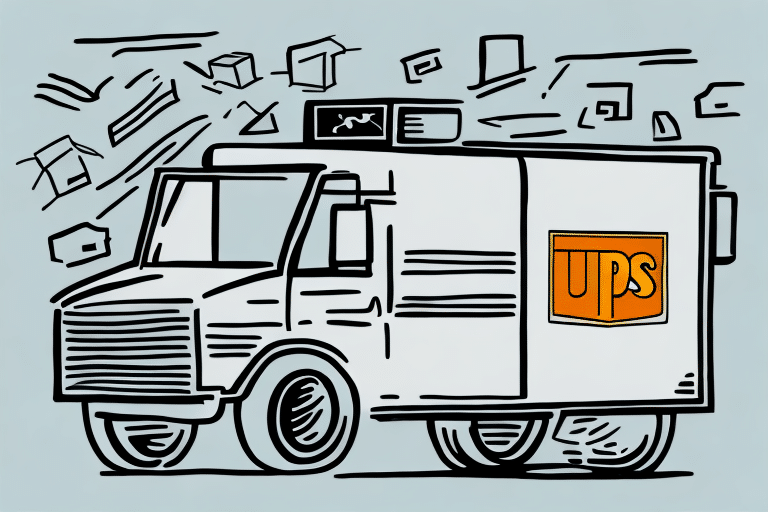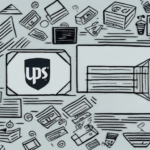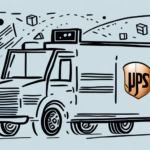Accurately Estimate Your UPS Shipment Time for Enhanced Business Efficiency
In the competitive landscape of online business, accurately estimating your UPS shipment time is crucial. Reliable delivery timings not only elevate your customer’s experience but also bolster your business reputation. Delayed packages can lead to customer dissatisfaction and negatively impact your bottom line. Understanding the factors influencing UPS shipment times and utilizing effective strategies to calculate estimated delivery dates are essential for managing expectations and optimizing your shipping process.
Importance of Accurate Shipment Times
Enhancing Customer Trust and Satisfaction
Providing precise shipment time estimates allows customers to plan accordingly, fostering trust and satisfaction. According to a study by Invesp, 86% of consumers are willing to pay more for a better customer experience. Accurate delivery estimates can significantly enhance customer loyalty and repeat business.
Optimizing Inventory Management
Accurate shipment times enable better inventory management. Knowing when packages will arrive helps in planning for staffing, warehouse space, and resource allocation. This can prevent issues like overstocking or stockouts, ensuring a smooth operational flow and maintaining profitability.
Factors Affecting UPS Shipment Time
Service Type Selection
UPS offers various service types, each with different delivery speeds and costs. Choosing the appropriate service—such as UPS Ground, UPS 2nd Day Air, or UPS Next Day Air—directly impacts your shipment time. Selecting the right service based on your delivery requirements is fundamental to meeting customer expectations.
Origin and Destination Locations
The distance between the shipment’s origin and destination plays a significant role in delivery time. Urban areas typically experience faster delivery times compared to remote or rural locations. Additionally, international shipments may face delays due to customs clearance and import regulations.
Package Weight and Size
Heavier and larger packages may require more handling time and could be subject to additional shipping regulations. Ensuring your packages are appropriately sized and weighted can help in expediting the shipping process.
Time of Day for Shipping
Sending packages earlier in the day can lead to faster processing and quicker delivery times. UPS processes shipments in the order they are received, so early shipments are more likely to be dispatched promptly.
Weather Conditions
Adverse weather conditions such as hurricanes, snowstorms, or floods can disrupt transportation and cause significant delays. UPS often reroutes packages or temporarily suspends delivery services during extreme weather events to ensure safety.
Peak Shipping Seasons
During peak seasons like holidays, the volume of packages increases significantly, potentially leading to longer delivery times. Planning ahead and scheduling shipments early during these periods can help mitigate delays.
Calculating Estimated Delivery Dates
Using UPS Online Tools
UPS provides online tools to estimate delivery dates based on package details and destination addresses. The UPS Shipping Calculator allows you to input relevant information to receive an estimated delivery date.
Leveraging the Time-in-Transit Tool
The Time-in-Transit tool offers a more precise estimation by considering specific origin and destination zip codes. This tool calculates the exact number of days required for a package to reach its destination.
Understanding Estimate Limitations
While UPS strives for accuracy, estimated delivery dates are subject to change due to unforeseen circumstances like weather events or logistical challenges. For time-sensitive shipments, consider upgrading to expedited services to minimize potential delays.
Utilizing UPS Tracking Tools
UPS My Choice
UPS My Choice offers delivery notifications, the ability to change delivery times and locations, and the option to provide specific instructions to UPS drivers. This tool enhances the visibility of your shipments and provides flexibility in managing deliveries.
UPS Quantum View
UPS Quantum View provides end-to-end visibility of all your shipments, allowing you to track each package and gain a comprehensive overview of your shipping operations. This is particularly useful for businesses handling large volumes of shipments.
Managing Customer Expectations
Proactive Communication
Keeping customers informed about their shipment’s status and any potential delays is essential. Proactive communication through email notifications or SMS alerts can mitigate frustration and enhance the customer experience.
Transparency About Potential Delays
Clearly communicating factors that may affect delivery times, such as weather conditions or peak seasons, helps set realistic expectations. Transparency builds trust and reduces the likelihood of misunderstandings.
Providing Tracking Information
Offering tracking details allows customers to monitor their shipments in real-time, providing peace of mind and reducing the number of customer inquiries regarding delivery status.
Troubleshooting Common Delivery Delays
Checking Package Status
Use the UPS tracking tools to identify the reason for any delays. Understanding the cause can help in taking appropriate action, whether it’s contacting UPS support or informing the recipient.
Address Verification and Correction
Incorrect addressing is a common cause of delays. Verify the recipient’s address and update it with UPS if necessary to ensure timely delivery.
Rescheduling or Redirecting Deliveries
If a delivery is missed or if the recipient is unavailable, use UPS’s rescheduling options to arrange for a more convenient delivery time or to redirect the package to a different location for pickup.
Optimizing Your Shipping Strategy
Choosing the Right Shipping Options
Select shipping options that align with your business needs and customer expectations. Balancing cost and delivery speed is key to optimizing your shipping strategy.
Implementing Best Packaging Practices
Proper packaging ensures the safe and efficient delivery of your products. Use appropriate materials and packaging sizes to prevent damage and reduce shipping times.
Leveraging Technology for Efficiency
Utilize Transportation Management Systems (TMS) and other shipping software to automate processes, track shipments, and analyze shipping performance. Technology can significantly enhance the accuracy of shipment time estimates and overall shipping efficiency.
Technological Advancements Enhancing Shipment Time Accuracy
Artificial Intelligence and Machine Learning
UPS employs artificial intelligence (AI) and machine learning to optimize delivery routes and predict shipment times more accurately. These technologies analyze vast amounts of data to enhance operational efficiency and reduce delivery times.
Transportation Management Systems (TMS)
A robust Transportation Management System (TMS) automates shipping processes, manages logistics, and provides real-time tracking and analytics. Implementing a TMS can streamline your shipping operations and improve the precision of delivery estimates.
Comparing UPS Shipment Time Estimates with Other Carriers
FedEx
FedEx offers a range of shipping services similar to UPS, including overnight and ground shipping. Comparing their delivery times and costs can help determine the best fit for your business needs.
DHL
DHL specializes in international shipping and may offer faster delivery times for overseas shipments compared to UPS. Evaluating their services can be beneficial for businesses with a global customer base.
USPS
The United States Postal Service (USPS) provides economical shipping options, particularly for small and lightweight packages. Comparing USPS services with UPS can help in selecting the most cost-effective solution without compromising delivery speed.
Frequently Asked Questions About Estimating UPS Shipment Times
- How can I track my UPS shipment? Use the UPS tracking tools available on their website or mobile app to monitor your shipment in real-time.
- What factors influence UPS shipment times? Factors include the type of service selected, package size and weight, origin and destination locations, weather conditions, and seasonal demand.
- Can UPS delivery estimates be trusted? While generally reliable, UPS delivery estimates are subject to change due to unforeseen factors like weather events or logistical challenges. It’s advisable to account for potential delays when planning shipments.
Conclusion: The Competitive Edge of Accurate UPS Shipment Time Estimates
Efficient and accurate shipping is a cornerstone of successful online business operations. By leveraging UPS’s tools and understanding the factors that influence shipment times, you can enhance customer satisfaction, optimize your operational efficiency, and maintain a competitive edge in the market. Proactive communication, strategic planning, and the adoption of technological advancements are key to mastering UPS shipment time estimation and ensuring your business thrives.




















